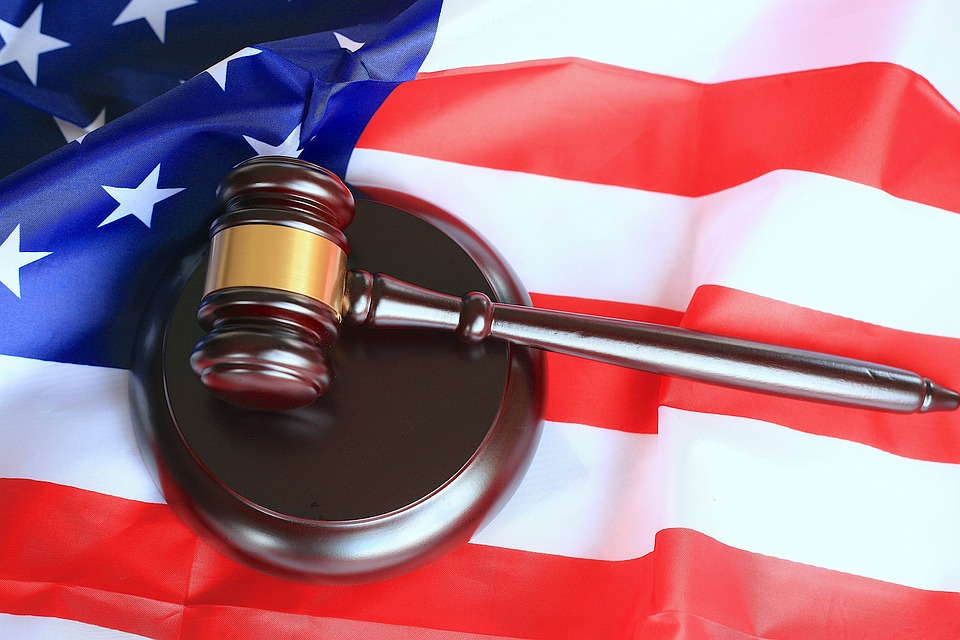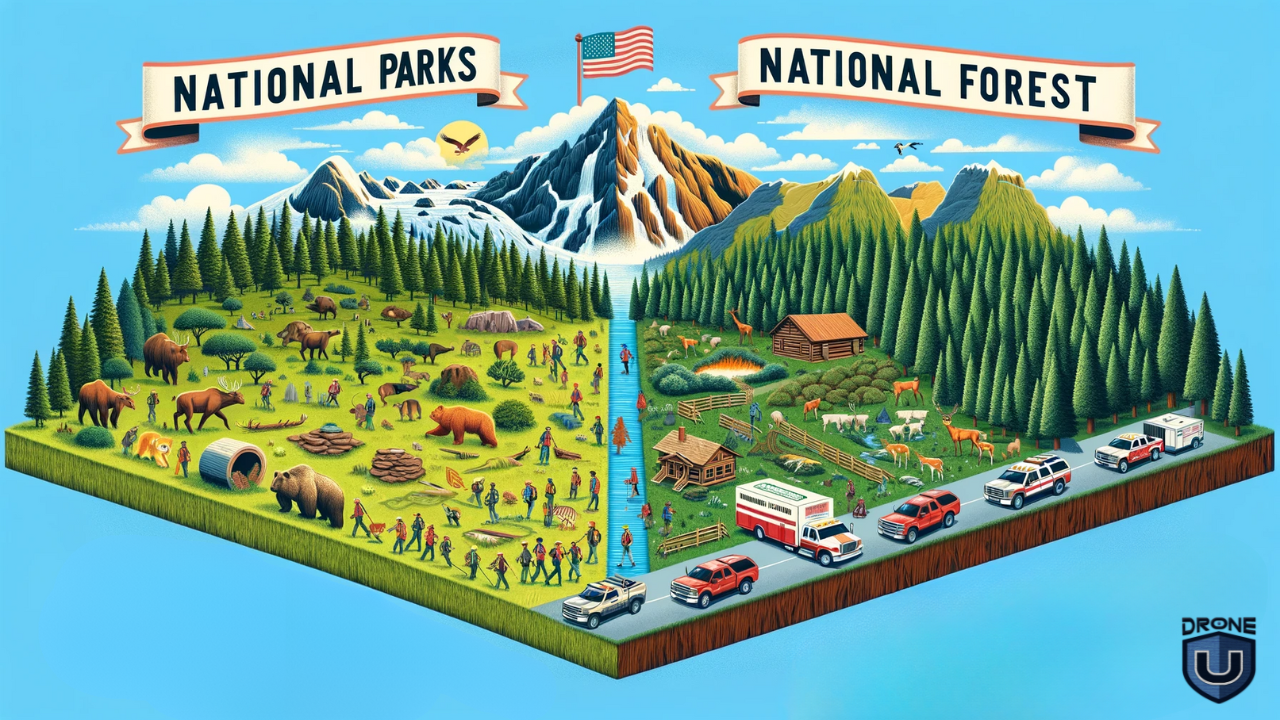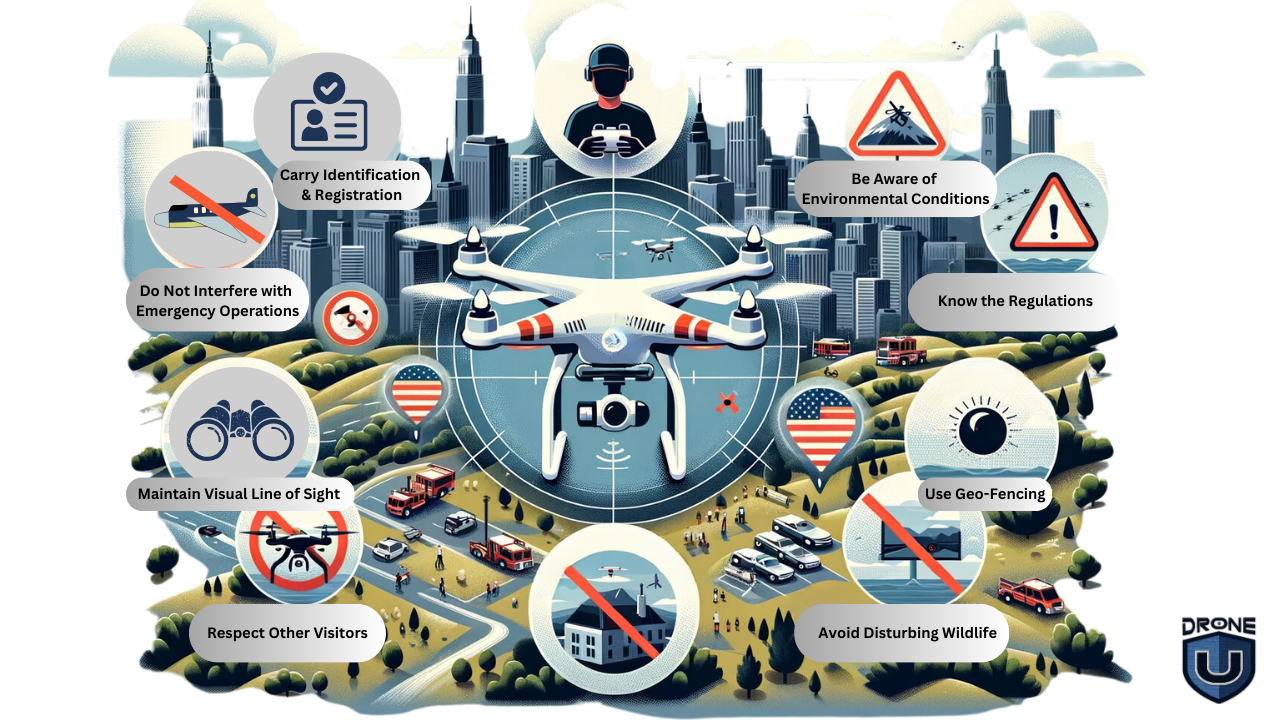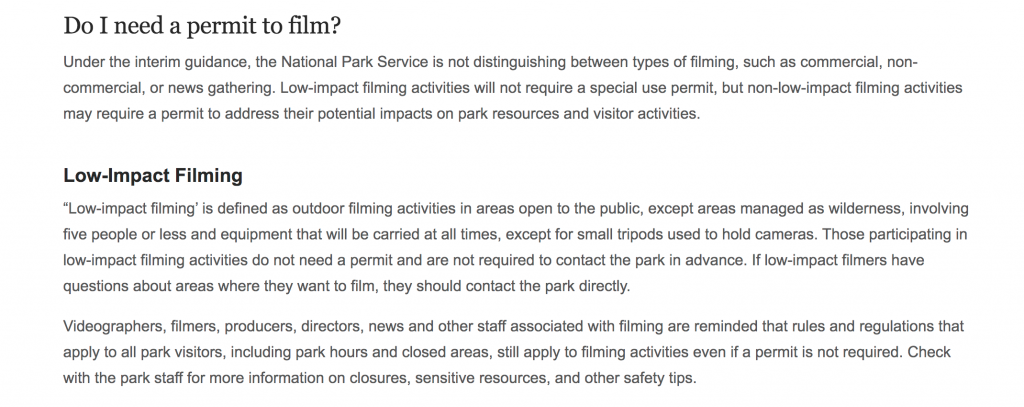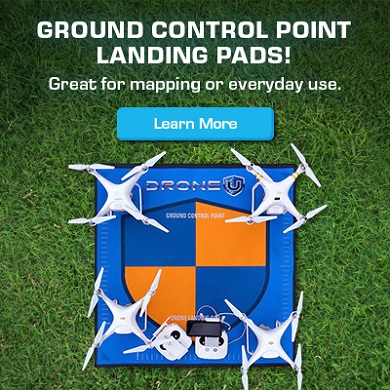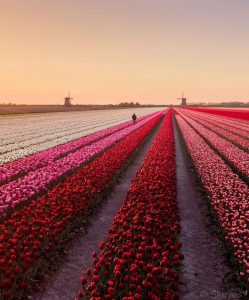
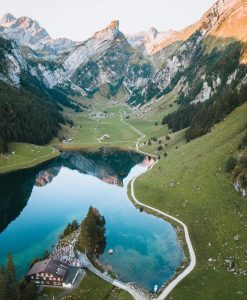

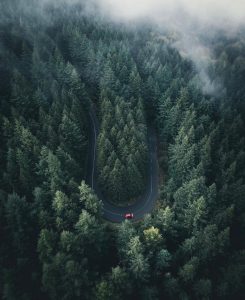
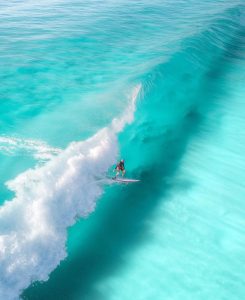
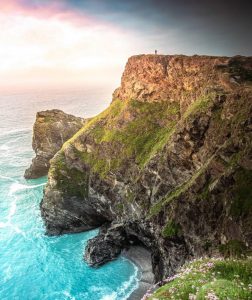
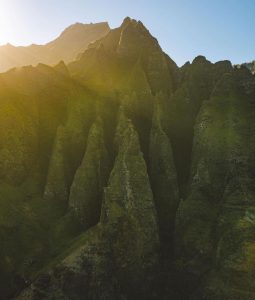
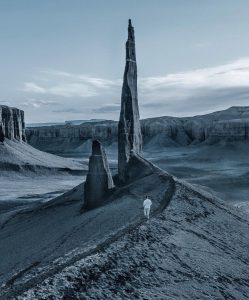

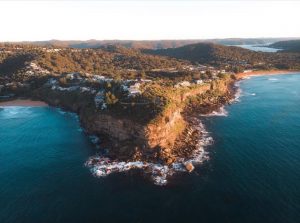
Download our free Part 107 drone certification study guide.
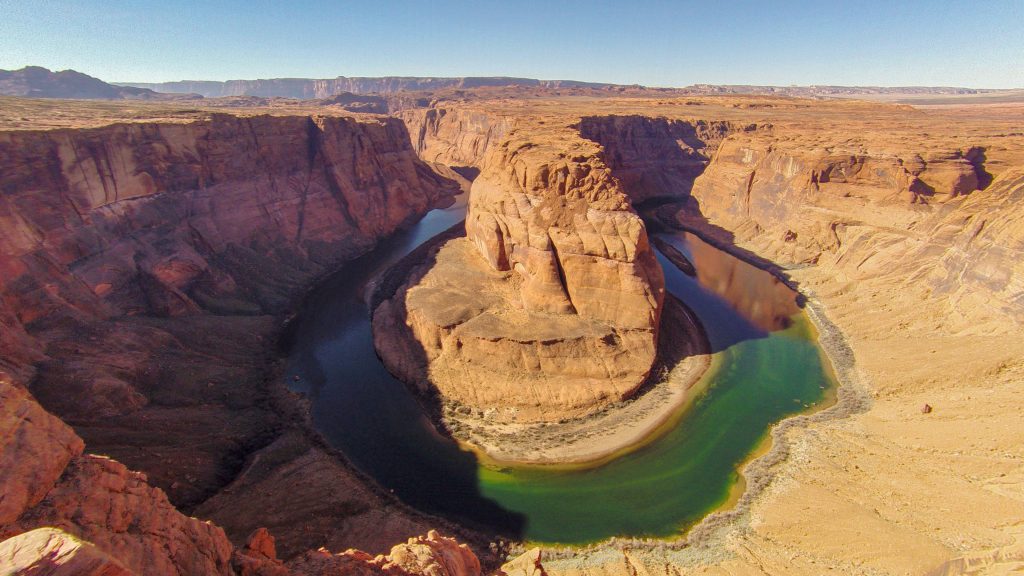
Unmanned Aerial Vehicles (UAVs) have revolutionized the way we explore and interact with our surroundings.
Our Forests and National Parks are no exception.
In the United States, we are witnessing the rising popularity of flying drones in these protected locations, both commercially and recreationally.
That’s precisely why the government has enacted specific rules and regulations for flying drones in national parks and forests.
Such regulations are crucial for maintaining the balance between enjoying drone technology and preserving the natural resources of our country.
This article provides an in-depth understanding of the regulations governing drone use in two types of federal lands – Forests and National Parks.
You will also discover the reasons behind the restrictions, the potential impacts of drones on wildlife and the environment, and the legal implications of non-compliance.
In addition to that, the article offers guidance on how to responsibly enjoy flying in these settings without adversely affecting Mother Nature.
Overview of FAA Regulations For Drone Flying
The Federal Aviation Administration (FAA) has established comprehensive regulations for drone flying, designed to ensure safety and accountability in the national airspace such as forests and national parks. These regulations cover a range of aspects from drone registration to operational limitations.
Here’s a quick overview of these regulations:
Drone Registration
Drones weighing between 0.55 pounds (250 grams) and 55 pounds (25 kilograms) must be registered with the FAA. This process involves providing the drone owner’s contact information and paying a fee. The registration number must be displayed on the drone.
Remote Pilot Certification
For commercial drone operations, pilots must obtain a Remote Pilot Certificate from the FAA. This involves passing an aeronautical knowledge test, which covers topics such as airspace classification, flight restrictions, weather, and drone operations.
Operational Guidelines
- Drones must be flown at or below 400 feet above ground level when in uncontrolled (Class G) airspace.
- Drones must be kept within the operator’s visual line of sight at all times.
- Night flying is permitted under certain conditions, including having a drone equipped with anti-collision lighting.
- Drone pilots must give way to and avoid interfering with manned aircraft.
No-Fly Zones and Airspace Authorization
Certain areas are designated as no-fly zones for drones, such as near airports and in certain controlled airspaces. Flying in these areas requires prior authorization from the FAA, which can be obtained through the LAANC (Low Altitude Authorization and Notification Capability) system or DroneZone.
Flying Over People and Moving Vehicles
There are restrictions on flying drones over people and moving vehicles, which vary based on the type of operation and the drone’s risk profile.
Privacy and Safety Considerations
Drone pilots must respect privacy laws and cannot operate drones in a manner that poses a threat to people or property.
Special Circumstances and Waivers
In certain cases, drone pilots can apply for waivers to operate outside the standard regulations. This requires demonstrating that the operation can be conducted safely under the proposed conditions.
These FAA regulations are continually evolving to adapt to new technologies and use cases in the drone industry. Drone operators must stay updated with the latest rules and guidelines, which can be accessed through the FAA’s website and other official channels. For specific, detailed, and up-to-date information, always refer to the FAA’s official resources.
National Park Service (NPS) Policies on Drones
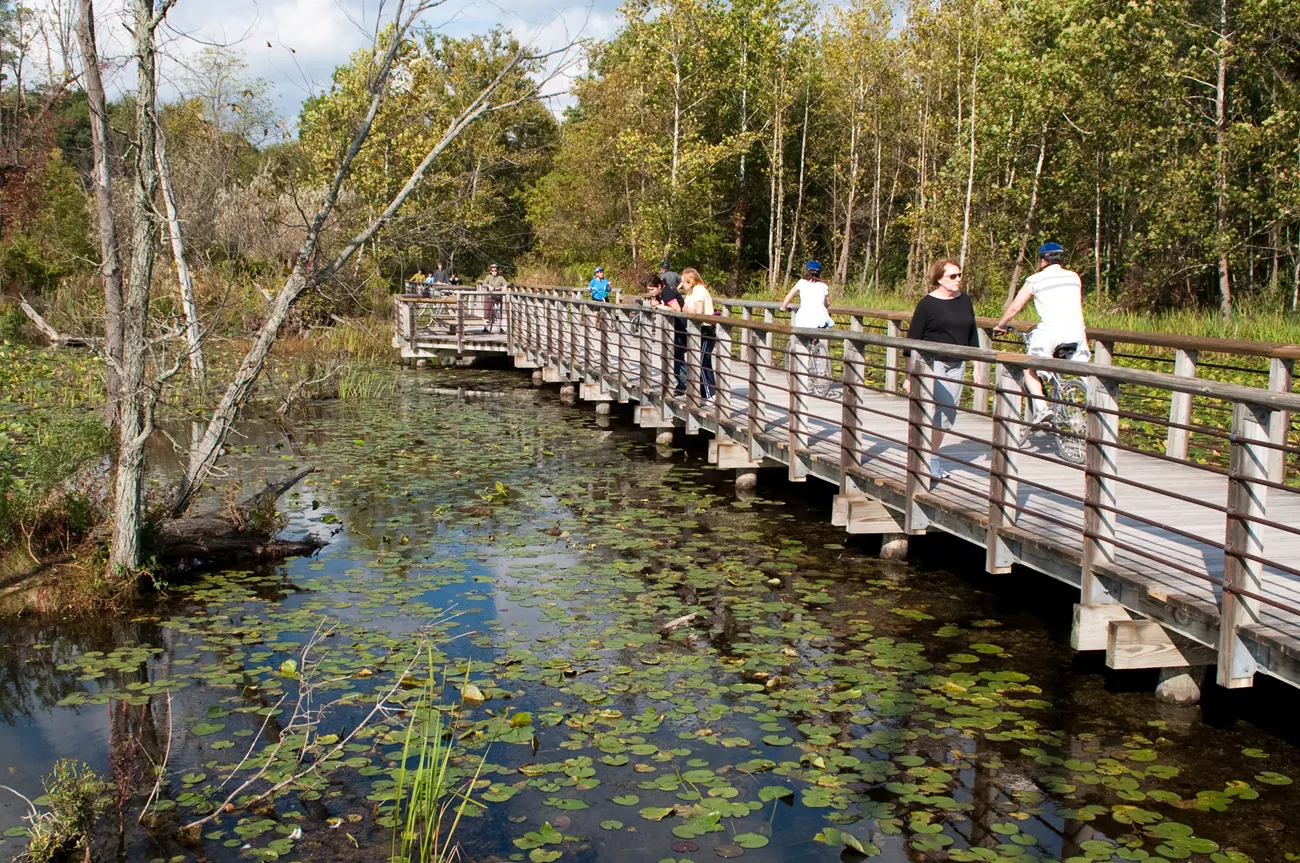
National Parks known for their scenic beauty and natural significance, have specific restrictions on drone usage. These policies are in place to protect the natural and cultural resources, as well as to ensure the safety and enjoyment of all park visitors.
Here’s a detailed explanation of these policies:
Prohibition of Drones
The NPS has implemented a general ban on the launching, landing, or operating of drones within most National Parks. This policy is outlined in the Code of Federal Regulations (36 CFR § 1.5), which gives the NPS the authority to regulate activities within National Park boundaries.
Reasons for the Ban
The ban is primarily due to concerns over the potential impacts of drones on wildlife, visitor experience, and safety. Drones can cause disturbances to wildlife, especially sensitive species, by provoking stress or behavioral changes. They can also detract from the natural soundscape and the overall visitor experience in parks, which are often sought for their tranquility and natural beauty. Additionally, drones pose safety risks in crowded areas and can interfere with emergency response operations.
Special Permits for Drone Use
While the general rule prohibits drone use, the NPS may grant special permits for drone operations in certain circumstances. These are typically for scientific research, resource management, and other administrative purposes. The approval process involves a thorough evaluation to ensure that the drone activity will not harm the park’s resources or the visitor experience.
Check out the video to learn about getting the permit to fly drones in a national park
Enforcement and Penalties
Violating the drone ban in National Parks can lead to penalties including fines and legal action. Park rangers are responsible for enforcing these regulations, and any violation is taken seriously as it compromises the park’s regulatory responsibilities.
Educational and Awareness Efforts
The NPS also engages in efforts to educate visitors about the drone policy. This includes information on their website, brochures, and signage within the parks to inform visitors of the restrictions.
Exceptions and Designated Areas
In some rare cases, specific areas within a National Park may be designated for drone use, often for educational or other specified purposes. However, these are exceptions and not the norm.
Drone pilots need to respect these regulations for the benefit of the natural environment, wildlife, and fellow park visitors. Before planning any drone flight in a National Park, it’s crucial to check the latest guidelines from the NPS or contact the specific park for more information.
For the most accurate and up-to-date information on drone policies in National Parks, visiting the official National Park Service website or directly contacting the park in question is recommended.
Reasons Behind The Prohibitions In National Parks
The restrictions or prohibitions on drone use in National Parks by the National Park Service (NPS) are grounded in several key reasons:
Wildlife Disturbance
Drones can significantly disturb wildlife, particularly birds and other sensitive species. The noise and presence of drones can disrupt nesting, feeding, and migratory behaviors, leading to stress and potentially harmful consequences for wildlife.
Visitor Experience
National Parks are places where people seek tranquility and a connection with nature. The presence of drones, especially their noise, can detract from the natural soundscape and the overall visitor experience. Drones can also intrude on the sense of solitude and wilderness that many visitors value in these parks.
Safety Concerns
Drones can pose safety risks, especially in crowded areas or during emergency operations. They might interfere with search and rescue missions, firefighting operations, or medical evacuations. In the event of a drone malfunction or operator error, drones could potentially injure visitors.
Preservation of Natural and Cultural Resources
National Parks are tasked with preserving their natural and cultural resources. Drones can potentially damage sensitive habitats and cultural sites, either directly through physical impact or indirectly through the effects of their use.
Privacy Concerns
Drones often come equipped with cameras, raising issues of privacy for park visitors who may not wish to be photographed or recorded without their consent.
Regulatory Compliance
The NPS has the authority to regulate activities within park boundaries to fulfill its mandate of resource protection and visitor enjoyment. The drone restrictions are part of this regulatory effort to maintain the parks’ natural and cultural integrity.
These reasons collectively reflect the NPS’s commitment to preserving the natural environment, wildlife, and visitor experiences in National Parks, while also ensuring safety and privacy. Drone operators are encouraged to respect these restrictions to help maintain the sanctity and beauty of these protected areas. For detailed information and specific park policies, it’s advisable to consult the NPS website or contact the park directly.
U.S. Forest Service Rules For Drone Use in National Forests
Fortunately, it is possible for drone pilots to fly in national forests. Unlike National Parks (which are controlled by the Department of Interior), the National Forests fall under USDA’s (US Department of Agriculture) domain.
The following excerpt clarifies USDA’s stance on commercial filming and photography permits –
“To further help differentiate between journalism and other activities, the following question should be asked. Is the primary purpose to inform the public, or is it to sell a product at a profit? If the primary purpose is to inform the public, no permit is required and no fee is assessed. I also want to emphasize that commercial photography only requires a permit if the photography takes place at locations where members of the public are not allowed or uses models, sets or props. Commercial photography and landing fees should be primarily viewed as land use fees. If the activity presents no more impact on the land than that of the general public, then it shall be exempt from permit requirements”. ~ Thomas Tidwell, 17th Chief, United States Forest Service
So, some key takeaways from the above excerpt –
1. If the primary purpose is to inform and educate, a permit is not required.
2. If the activity presents no more impact on land than that of the general public, a permit is not required
However, the USDA has strict rules about where you can fly and where you cannot fly. For instance, you CANNOT fly in wilderness areas. Nor can you fly near campgrounds and trails (in order to comply with the “flying over people” rule). And you definitely cannot fly near a wildfire.
Always remember to check for TFR’s when flying in a National Forest. In order to check for any existing TFR’s, we recommend checking out Tfr.faa.gov rather than any of the other Apps. It is always better to go to the main source than rely on apps which may/may not contain updated information. Finally, always talk to enforcement officers with respect. If you want to receive respect, you have to give respect in return.
National Forests, managed by the U.S. Forest Service, offer different guidelines that may allow the use of drones under certain conditions, reflecting their distinct management goals and the varied activities they support.
While drone flying is generally permitted in National Forests, it is subject to specific regulations and guidelines aimed at protecting the environment, and wildlife, and ensuring the safety of all forest visitors.
Here’s an overview of these rules:
Compliance with FAA Regulations
Drone operators in National Forests must adhere to the Federal Aviation Administration (FAA) regulations. This includes flying at or below 400 feet, keeping the drone within visual line of sight, not flying directly over people, and not interfering with manned aircraft operations.
Avoidance of Restricted Areas
Certain areas within National Forests may be restricted for drone use. This includes areas near wildfires, as drones can interfere with firefighting efforts and pose a safety risk to firefighting aircraft. Temporary flight restrictions (TFRs) are often in place in these areas.
Consideration for Wildlife and Environment
Pilots are expected to avoid disturbing wildlife and sensitive habitats. During certain times of the year, such as nesting or mating seasons, additional restrictions may be in place to protect wildlife.
Prohibition in Wilderness Areas
Most wilderness areas within National Forests prohibit the use of motorized equipment, including drones. This is to preserve the natural character and solitude of wilderness settings.
Privacy Concerns
As with all drone operations, respecting the privacy of others is important. Avoid flying over private property adjacent to National Forest lands without permission.
Special Use Authorizations
For commercial drone use or other specific drone activities that go beyond recreational purposes, a special use authorization might be required from the USFS.
Safety and Responsibility
Drone operators are responsible for flying their drones safely and must not endanger other visitors or wildlife. This includes being aware of and avoiding other air traffic that may be present in these areas.
Drone pilots are encouraged to familiarize themselves with and follow these guidelines to ensure a safe and enjoyable experience for all forest visitors and to protect the natural resources within National Forests. For the most current and detailed information, it’s advisable to consult directly with the U.S. Forest Service or visit their official website.
How These Rules Differ From Those In National Parks
The rules for drone use in National Parks and National Forests in the United States differ significantly due to the differing management goals and policies of the National Park Service (NPS) and the U.S. Forest Service (USFS).
Here’s a comparison of how the rules vary:
National Parks (Managed by NPS)
- General Prohibition: The NPS generally prohibits the launching, landing, and operation of drones within the boundaries of National Parks. This blanket ban is aimed at protecting wildlife, and visitor experiences, and preserving the natural soundscape.
- Special Permits Required: Drone use is typically only allowed with special permits, and these are usually granted for scientific research, resource management, or other administrative purposes.
- Strict Enforcement: Violation of drone regulations in National Parks can lead to significant penalties, including fines and legal action.
- Focus on Preservation: The NPS’s strict stance on drones is largely driven by its mandate to preserve natural and cultural resources and to provide unimpaired enjoyment of these resources for future generations.
National Forests (Managed by USFS)
- More Lenient Rules: The USFS generally allows the use of drones in National Forests, but operators must follow Federal Aviation Administration (FAA) regulations and USFS guidelines.
- Restrictions in Specific Areas: Drone use may be restricted in certain areas, particularly near wildfires or in designated wilderness areas where the use of motorized equipment is prohibited.
- Consideration for Wildlife and Environment: While drone use is permitted, pilots are advised to avoid disturbing wildlife and sensitive habitats.
- Commercial Use: For commercial drone operations or specific drone activities beyond recreational use, a special use authorization from the USFS may be required.
Key Differences
- General Policy: The NPS adopts a more restrictive approach due to its focus on preservation, whereas the USFS provides more flexibility, reflecting its multiple-use mandate which includes recreation, conservation, and resource management.
- Enforcement and Penalties: The potential consequences for unauthorized drone use are generally more severe in National Parks compared to National Forests.
- Area Restrictions: National Parks have a broader prohibition, while National Forests have more specific restrictions related to certain areas or activities.
In summary, while both entities aim to protect the environment and ensure public safety, the NPS’s policies are more prohibitive due to their focus on preservation and maintaining natural experiences, compared to the USFS’s policies which are more accommodating of drone use while still protecting forest resources and public safety. Drone operators should always check the most current regulations and policies for the specific National Park or National Forest they plan to visit.
Tips For Safe Drone Operation In Sensitive Areas
Operating drones in sensitive areas like National Parks and National Forests requires careful consideration and adherence to specific safety guidelines to ensure both the protection of the environment and the enjoyment and safety of other visitors. Here are some tips for safe drone operation in these areas:
Know the Regulations
Before flying a drone, be aware of and understand the specific regulations of the area you’re in. National Parks generally prohibit drone use, while National Forests have more lenient rules but with certain restrictions.
Avoid Disturbing Wildlife
Drones can stress or scare wildlife, leading to negative impacts on their natural behavior and habitat. Keep a safe and respectful distance from animals.
Respect Other Visitors
Be mindful of other people’s experiences in these natural settings. Avoid flying drones near other visitors, especially in quiet areas where people seek solitude and peace.
Maintain Visual Line of Sight
Always keep your drone within your line of sight. This helps in avoiding unintended interactions with wildlife, people, or other aircraft.
Be Aware of Environmental Conditions
Weather conditions can change rapidly in outdoor settings. Be aware of wind, temperature, and other environmental factors that can affect drone operation.
Use Geo-Fencing If Available
Some drones come with geo-fencing capabilities that can help prevent them from entering restricted areas. Make use of these features to stay compliant with area regulations.
Do Not Interfere with Emergency Operations
Never fly a drone near emergency response efforts, such as firefighting or search and rescue operations. Drones can severely interfere with these critical activities.
Carry Identification and Registration
Have your drone registration and identification on hand in case you are approached by authorities or other individuals questioning your drone use.
By following these tips, drone operators can contribute to the preservation of sensitive areas while enjoying the unique perspectives that drone flying offers. Always check the latest guidelines from relevant authorities before planning your drone activities.
These guidelines provide a general overview, but it’s always best to consult directly with the relevant authorities or their websites for the most accurate and up-to-date information.
Frequently Asked Questions
Can You Fly Your Drone in a National Park?
Thinking of grabbing some awesome drone footage at the Grand Canyon this weekend? The lure is understandable — there is nothing better than capturing nature in its finest glory from high up in the sky. Unfortunately, you cannot put your plan into action. National Parks were classified as “no drone” zones in 2014. And flying here means stiff penalties. For drone pilots, this is a huge missed opportunity — the NPS controls some 417 parks, 23 trails, and 60 rivers.
“It’s very broad in that it sweeps in every national park-controlled location, including things like beaches and forests where there really aren’t the same sensitivities to noise, and where model airplanes have been allowed for decades”. ~ Brendan Schulman, DJI.
According to Policy Memorandum 14–05 issued by the NPS on June 19, 2014,
And this is how NPS defines “unmanned aircraft”:
In order to fly your drone in a national park, you will need a Special Use Permit. This permit can be issued only for uses such as search and rescue, research and fire safety. However, it is nearly impossible to procure this permit. As there was a recent supreme court cases that stated NPS cannot charge visitors for Photography and/or special use permits. To clarify, special use permits are still in affect, they simply do not charge fees for them anymore.
And, if you are caught flying without your permit, National Park service rangers have the authority to confiscate your gear. Not to mention the maximum penalty which can be as severe as six months in jail and a $5,000 fine. It is ironic that while procuring a permit to fly in a National Park is almost impossible, the NPS can themselves fly drones in a National Park. NPS now states:
That said, there are particular areas of National Parks that you really shouldn’t fly. For example, there are areas of the grand canyon that have heavy air traffic. Tourists fly down the canyon and land for a lunch. Avoid special use areas that are marked on sectional (airspace) maps.
The only way to fly in a national park is to take off and land from outside the national park. You cannot operate a drone from a national park, you can only operate it from outside. NPS’s website reiterates that pilots must fly Line of Sight according to the FAA, but without a formal and technical definition of Line of Sight, it is open to interpretation.
Is the Drone Ban in National Parks Justified?
I was surprised to learn that while battery-powered and environment-friendly drones are disallowed in National Parks, noisy ORV’s (Off Road Vehicles) are not a problem. Sand buggies and ATV’s are classified as ORV’s. A lot of states have put the 96 dB rule for ATV’s into effect. It means that an ATV cannot be louder than 96 dB. Now, drones are less noisy compared to ATV’s. The Phantom 4, for instance is not louder than 70 dB when it is 6 m away. And, if you are flying your drone at 100–150 feet, you can expect significantly less noise pollution. The recently launched Phantom 4 V2 is known to be much quieter than its predecessors. According to the NPS website, ORV’s pose other dangers too. Fluids leaked from ORV’s can, for instance, poison fish and other animals. ORV’s can also destroy plants and beach dunes.
Economically also, it would make a lot of sense for national parks to permit drones to fly in the national airspace. As of FY 2017, the NPS has estimated that $11.6 billion is required for backlogged maintenance. Certainly, allowing drones to fly can be a good source of revenue, even if NPS cannot charge for photography permits.
Pro Tip — Often, drone pilots, failing to realize that they are in a National Park, end up flouting the law. You do not want to be that guy. Check your airspace, and know where the Park boundaries are. Often times there are many cool places to fly outside of the popular areas. Make sure to watch the Operations course to learn how to take off clandestinely.
Add Your Comment
Some of our most popular topics...
Be sure and check out our page with guides, posts and other helpful information.
Learn MoreTop 10 Blogs
- 1. Autel Evo 2 vs DJI Mavic 3 – Which Drone Should You Buy in 2020?
- 2. Part 107 License FAQ | Your Drone Certificate Questions Answered
- 3. Flying Large Drones Over 55 Pounds Using Section 333 Exemption
- 4. Drone Insurance FAQ's – How to Get the Best and Most Affordable Coverage
- 5. LAANC Apps - Using Kittyhawk and Skyward for Approval
- 6. FAADroneZone - How to Apply for a Part 107 Waiver
- 7. Little Known Facts About Part 107’s “Visual Line of Sight (VLOS)" Rule That You Might Not Be Aware Of
- 8. Should You Get Drone Jobs through Drone Base?
- 9. Flying Drones Over Streets and Moving Traffic
- 10. Best Drones for Flying in the Wind
Top 10 Podcasts
- 1. What should I know about drone insurance?
- 2. BONUS EPISODE: Michael Singer v. City of Newton (City Drone Ordinance Nullified!)
- 3. Is there a place for me in the real estate industry if I lack photography and video skills?
- 4. Is the DJI Spark a good drone?
- 5. INTERVIEW WITH ANDY LUTEN
- 6. How to market your drone business
- 7. DJI Drone Comparison | DJI Phantom 4 Pro, Inspire 1, Inspire 2
- 8. Can I fly my drone over people if I have their consent?
- 9. Drone Photography Pricing for land-only drone jobs
- 10. Can I fly my drone over a road?

Download our No #1 Resource: Part 107 Study Guide
What's Inside this Guide?
- 2500+ pages of FAA material broken into digestible easy to read 279 pages
- Includes over 350 sample quiz & test questions(with answer keys)
